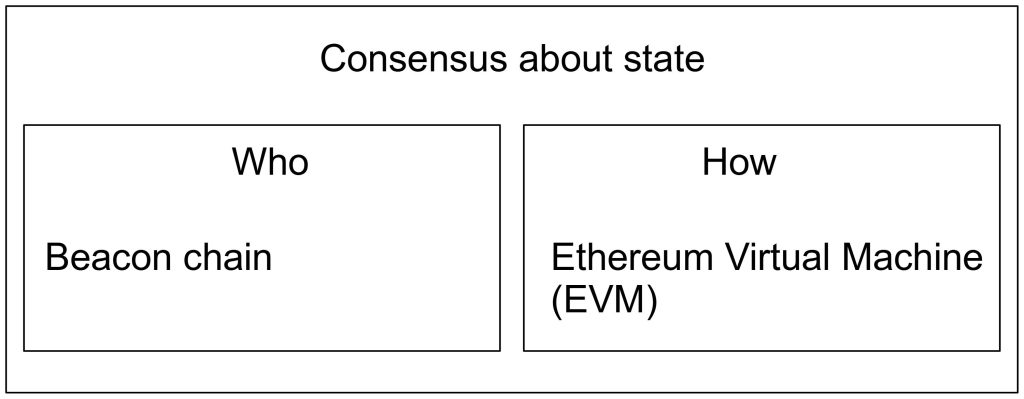Introduction to Ethereum 2.0
Last Updated on 7. August 2023 by Mario Oettler
Ethereum is a public blockchain. Its currency is Ether (ETH), the consensus model is proof of stake (PoS) since September 2022. Before, it was proof of work (PoW).
Users can interact with the network by sending transactions and paying the transaction fee (also called gas). Transactions can either send ETH from one account to another or invoke the execution of smart contracts. A smart contract is an (almost) Turing complete script that runs on the blockchain.
Like with all public blockchains, the consensus about the current state is an important aspect. In Ethereum, it can be viewed from two perspectives: Who is responsible for the consensus, and how should the current state be computed?
The question of “Who is in charge of the consensus?” is answered through the Beacon chain. The Beacon chain choses the block producers and validators for each slot.
The question of “How is the new state computed” is answered by the Ethereum Virtual Machine (EVM). It deals with the rules of processing a transactions, updating balances and variables.


 Register
Register Sign in
Sign in